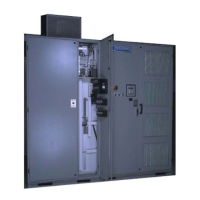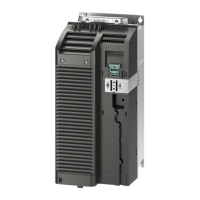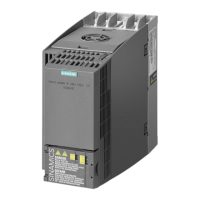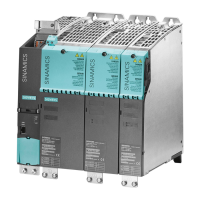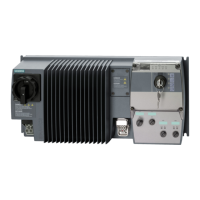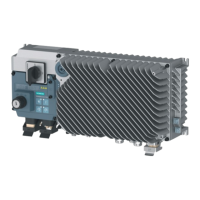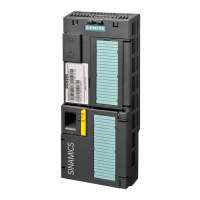8.11 Dynamic Braking with External Resistors
This function is for providing quick stopping capability to a two quadrant drive, so that under
special conditions, the motor can be brought to a faster stop than by ramping. Deceleration is
based on motor and load inertia, and the sizing of the braking resistors and contactors.
This function is provided through the SOP via a digital input to trigger a fast braking event i.e.
"Fast Decel" or "Emergency Brake" event. A digital output from the SOP provides control for an
output device to connect the resistor banks across the terminals of the AC motor.
The drive will be commanded to go into the quick stop mode, and a second set of regenerative
torque limits will be selected to set the maximum current limit to prevent over-stressing the
motor. The deceleration action maintains the drive enable and provides reactive current to the
motor for maximum results in braking. Once the motor speed reaches zero speed setting, the
drive will enter the coast stop state, exit the special braking function and reset the braking
contactor. The quick stop ag, secondary torque limits and braking action will cease.
The dynamic braking mechanism converts the motoring action of the machine into generator
action during the braking. The dynamic braking technique of an induction motor is aimed at fast
braking action or fast deceleration action of the motors. During braking, the motor starts
regenerating and as a result, a large voltage is induced across the stator terminals.
The deceleration time required by the motor depends on the time required by the heat
generated during regeneration to be dissipated. For this purpose, resistor banks are switched
across the motors.
The resistor banks put large loads on the electrical circuits. When a generator circuit is loaded
down with resistance, it causes the machines to slow their rotations. By varying the amount of
excitation in the induction motor elds and the amount of resistance imposed on the circuit by
the resistor grids, the induction motor can be slowed down to a virtual stop. The generated
electric energy is dissipated through the resistor bank. The resistor banks also provide the
protection to the IGBTs in the drive circuitry. Switching a resistor bank across the terminals
enables the electrical and the thermal energy to dissipate across the resistors, rapidly slowing
down the motor.
The drive control is able to maintain stable operation during deceleration even though the
connection of the resistors abruptly changes the impedance seen by the drive at its output
terminals. The drive control is able to limit the output current satisfactorily without causing any
over-voltage trips in the cells.
Advanced Operating Functions
8.11 Dynamic Braking with External Resistors
NXGPro+ Control Manual
250 Operating Manual, A5E50491925A
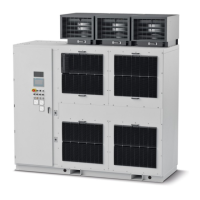
